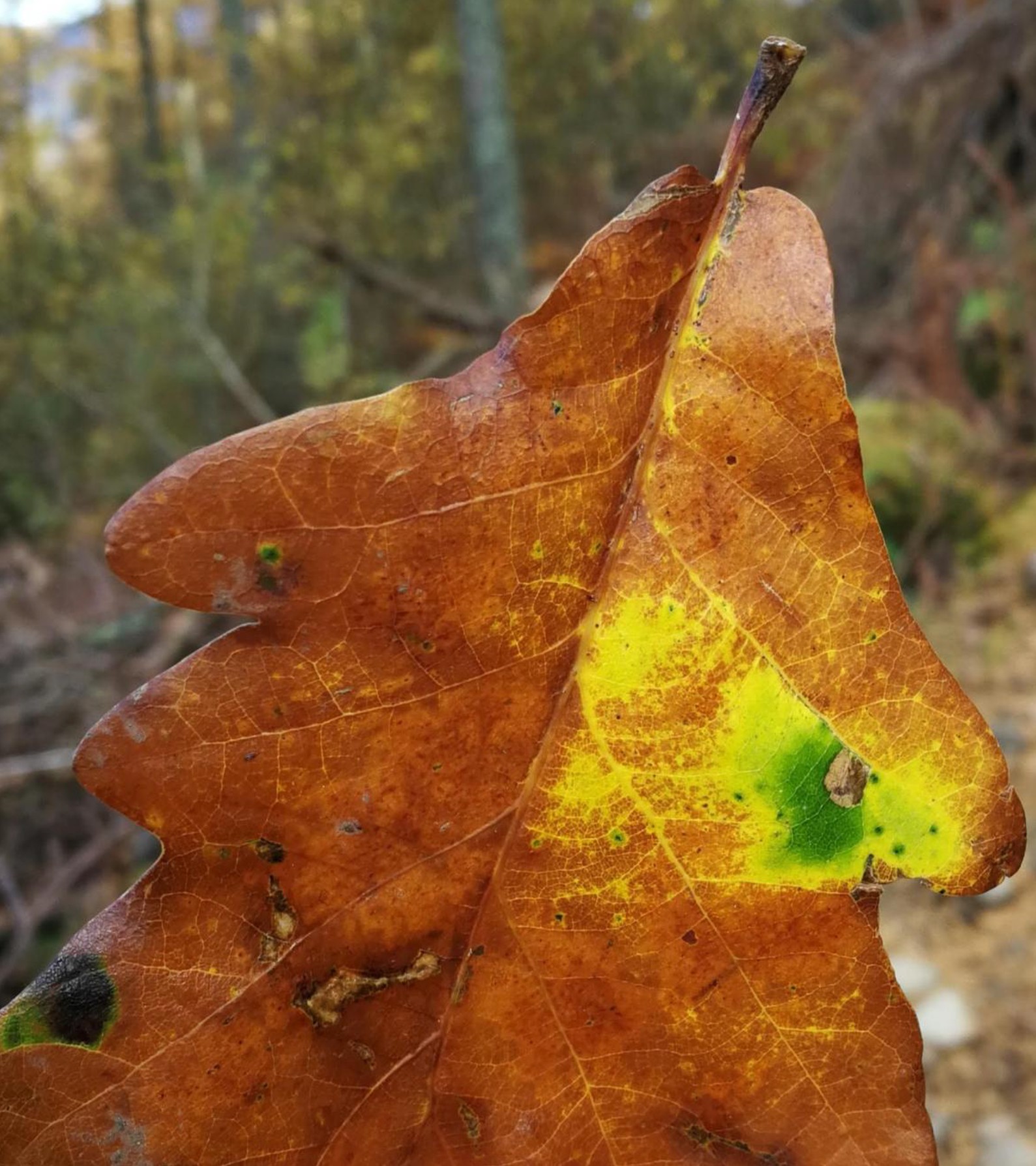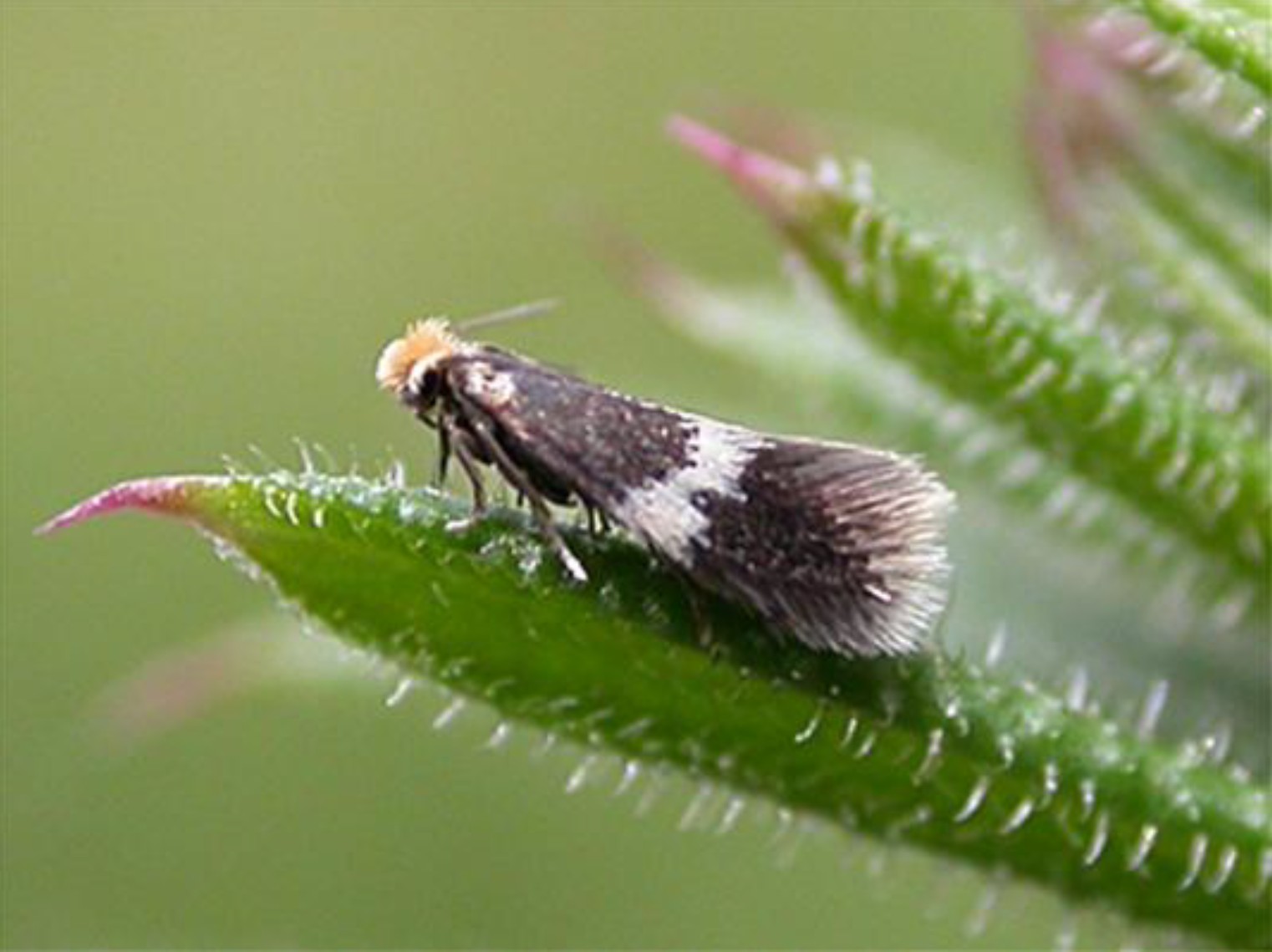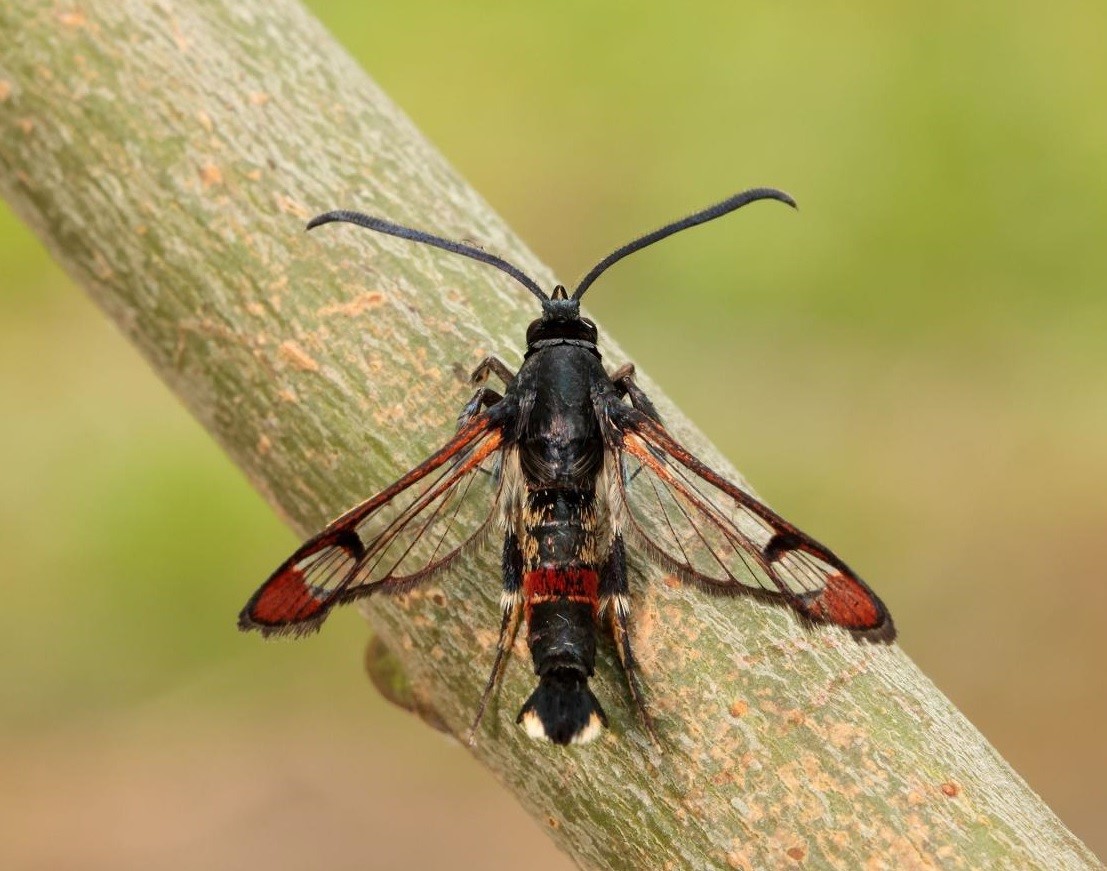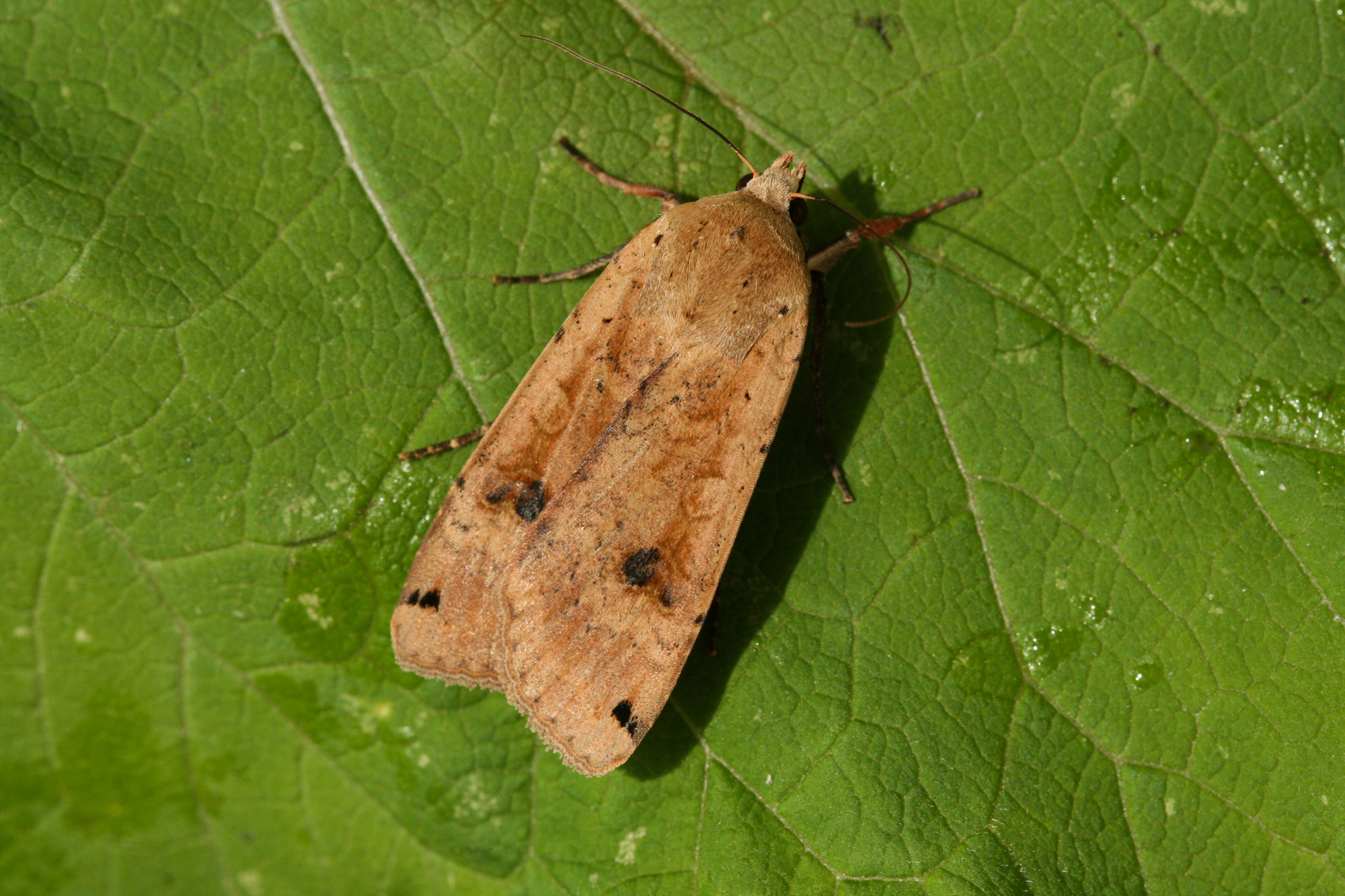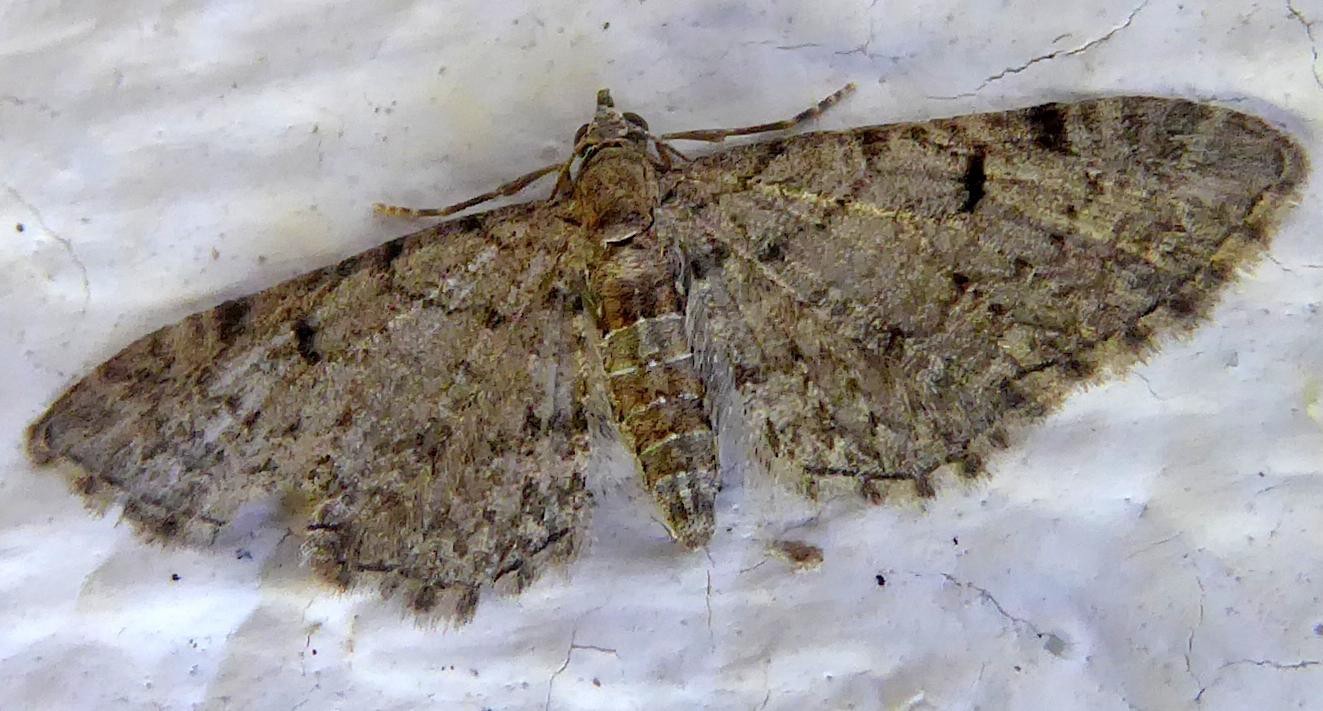This is a bit of a cheat as this moth, Ectoedemia albifasciella, is most likely to be seen in May rather than November. However, even at that time of year very few of the tiny adult moths are ever actually recorded. This is because, along with many of the related species, they rarely come to light. It is one of the 100 or so species of the family Nepticulidae found in the UK which are specialists in mining the leaves, buds, fruit or even bark of trees and many other plants. They lay relatively large eggs and, in this species, the newly hatched caterpillar burrows into a leaf of oak and feeds on the leaf tissue leaving the upper and lower cuticles intact. This forms a blotch mine which is semi-transparent with the larva and its droppings (frass) visible if the leaf is held up to the light. Once fully grown the caterpillar leaves the mine and pupates nearby.
Other species form long, thin mines or tunnels within buds, fruits or bark – each species having a unique shape, pattern, frass distribution and emergence hole. Using these signs, along with the identification of the food plant they are on, the moths are readily identified from the characteristics of their mines. Many can be identified even without the caterpillar being present including looking at leaves which have already fallen from the trees.
One such mine was found recently by Mark Pollitt on oak in the Lake District. The photograph shows very clearly that although the leaf has already changed to its deep autumn colours, the area around the mine remains green. Recent scientific research has shown that this is due to a bacteria carried by the caterpillar which chemically alters the tissues of the leaf to keep that part still photosynthesising and, therefore, continuing to produce food for the larva to eat. This ‘green island’ effect has been found in a number of leaf mining moths and is probably a very important factor for survival in the north.
This moth has a patchy distribution throughout the UK but has been recorded in most vice-counties in mainland Scotland. In D&G there are five records all of them leaf mine sightings. However, given the tiny size of these moths, and of their mines, they must be frequently overlooked. Perhaps a big effort to find more leaf mining species would be a good target for next year?

